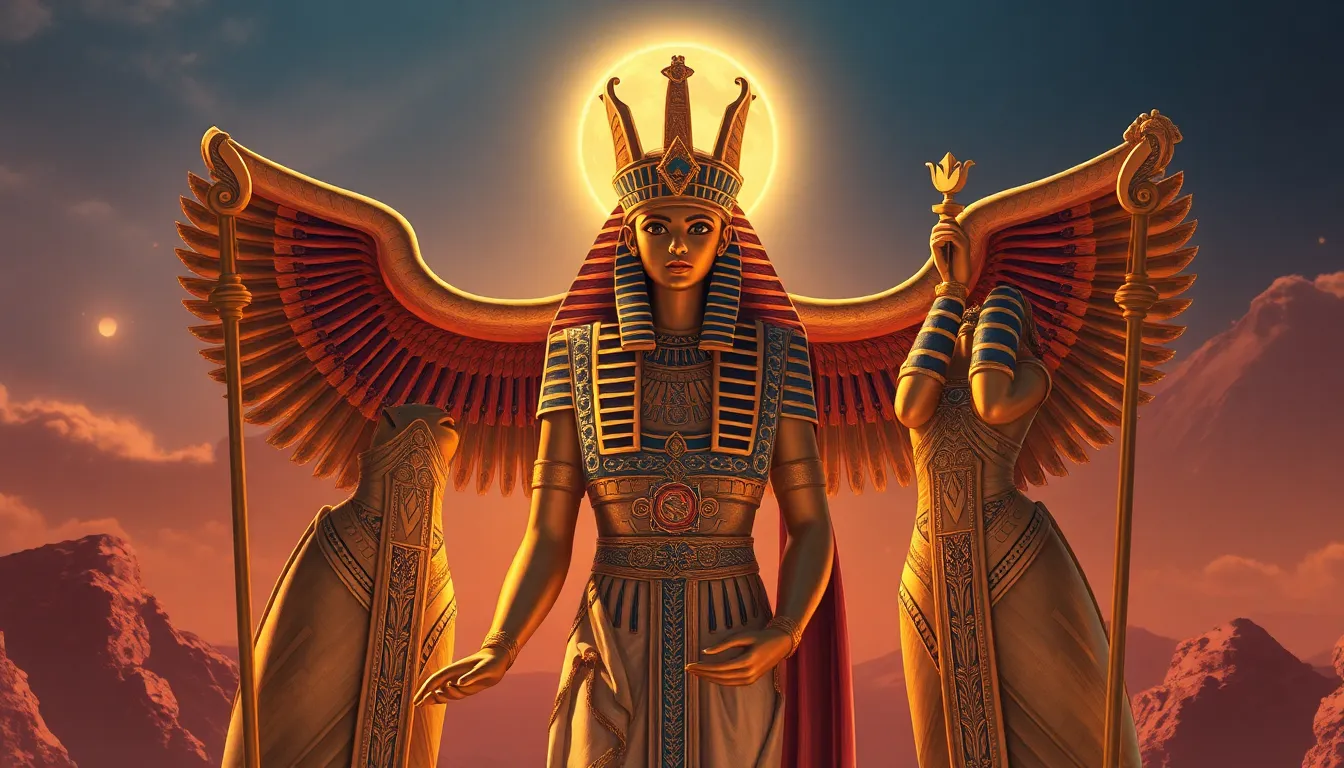The Protective Role of Isis: The Mother Goddess in Egyptian Mythology
I. Introduction
Isis is one of the most revered deities in ancient Egyptian mythology, embodying the essence of motherhood, protection, and magic. As a central figure in the Egyptian pantheon, she played a critical role in the daily lives and spiritual beliefs of the ancient Egyptians. Her protective nature was not only significant in religious contexts but also in the broader cultural landscape of ancient Egypt.
This article explores the historical context of Isis worship, her iconography, her protective role, and her enduring legacy. By delving into these aspects, we aim to highlight the multifaceted nature of Isis as a mother goddess who has transcended time and culture.
II. Historical Context of Isis Worship
Isis’s origins can be traced back to the early dynastic period of ancient Egypt, where she is believed to have emerged as a significant deity associated with fertility, motherhood, and magic. Over the centuries, her worship evolved, adapting to the changing sociopolitical landscapes of Egypt.
Throughout different dynasties, the reverence for Isis grew, particularly during the Middle Kingdom and New Kingdom periods, when her cult became widely popular. Her influence extended beyond Egypt, reaching regions such as Nubia and later into the Greco-Roman world.
- Origins: Early dynastic period, associated with fertility and motherhood.
- Evolution: Increased worship during the Middle and New Kingdoms.
- Geographic Spread: Influence extended to Nubia and later Greco-Roman cultures.
III. Iconography and Symbols Associated with Isis
Isis is often depicted in various forms of art and sculpture, showcasing her importance in ancient Egyptian culture. Common representations include:
- Isis wearing a throne headdress, symbolizing her role as a queen and mother.
- Holding the ankh, representing life and immortality.
- In some depictions, she is shown nursing her son, Horus, emphasizing her maternal qualities.
The symbolic meanings of her attributes reinforce her protective qualities, as she is often seen as a nurturing figure who provides guidance and safety to her followers.
IV. Isis as the Protector of the Vulnerable
As a mother and guardian, Isis’s protective role is profound. She is often invoked as a protector of children, embodying the ideals of maternal care and nurturing. Her mythological narratives emphasize her commitment to safeguarding the vulnerable.
Moreover, Isis’s involvement in the afterlife showcases her role as a protector of souls. She is believed to assist in the transition of the deceased to the afterlife, ensuring they are safe and guided on their journey.
V. Mythological Narratives Highlighting Isis’s Protective Nature
Numerous myths highlight the protective nature of Isis, showcasing her unwavering commitment to her family and followers:
- The story of Osiris: After Osiris was murdered by his brother Set, Isis embarked on a perilous journey to resurrect him, demonstrating her determination and protective instincts.
- Horus against Set: Isis played a crucial role in protecting her son Horus from the threats posed by Set, the god of chaos. She taught him the ways of kingship and ensured he was safe in his quest to reclaim his rightful throne.
- Other myths: Various other stories illustrate her protective interventions, reinforcing her status as a guardian deity.
VI. Isis in Rituals and Religious Practices
Rituals dedicated to Isis were integral to ancient Egyptian religious practices. These rituals often involved:
- Offerings made to her statues and temples, seeking her blessings and protection.
- Amulets and charms that invoked her protection, commonly worn by women and children.
- Festivals celebrating her attributes, such as the annual festival marking her role in the inundation of the Nile, which was crucial for agriculture.
These practices underscored the significance of Isis as a protector in the everyday lives of the ancient Egyptians.
VII. Isis’s Legacy and Influence Beyond Ancient Egypt
Isis’s influence extended far beyond ancient Egypt, impacting subsequent cultures and religions:
- Greco-Roman mythology: Isis became a prominent figure in Greco-Roman religions, often depicted alongside other deities and integrated into their mythos.
- Modern interpretations: Isis continues to inspire contemporary discussions about divinity and protection, appearing in various forms of art, literature, and popular culture.
Her legacy as a mother goddess and protector remains significant, reflecting the universal themes of motherhood and safeguarding that resonate across cultures and eras.
VIII. Conclusion
In summary, Isis embodies a multifaceted protective role within Egyptian mythology, serving as a mother, guardian, and powerful deity. Her enduring significance in mythology and culture speaks to the timeless nature of her protective qualities and maternal instincts.
As we reflect on her influence, it becomes evident that Isis’s representation of divinity and protection remains relevant in contemporary discussions, highlighting the perpetual need for guardianship and nurturing in all societies.




